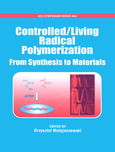

Most ebook files are in PDF format, so you can easily read them using various software such as Foxit Reader or directly on the Google Chrome browser.
Some ebook files are released by publishers in other formats such as .awz, .mobi, .epub, .fb2, etc. You may need to install specific software to read these formats on mobile/PC, such as Calibre.
Please read the tutorial at this link: https://ebookbell.com/faq
We offer FREE conversion to the popular formats you request; however, this may take some time. Therefore, right after payment, please email us, and we will try to provide the service as quickly as possible.
For some exceptional file formats or broken links (if any), please refrain from opening any disputes. Instead, email us first, and we will try to assist within a maximum of 6 hours.
EbookBell Team

4.7
66 reviewsThe preparation and characterization of new materials with precisely controlled macromolecular dimensions, functionalities, and decomposition, as well as with well-defined topologies, is perhaps the main focus of contemporary polymer synthesis. The best control of molecular functions can beachieved in a controlled/living polymerization -- a chain growth process without chain breaking reactions. Recently, controlled/living polymerizations have extended to radical systems which are not only commercially important, but also have the largest potential due to the availability of radicallypolymerizable monomers, facile copolymerization and undemanding experimental conditions. Controlled Radical Polymerization will examine recent advances in mechanistic and synthetic aspects of controlled/living radical (co)polymerization systems. Not only will this book be focused on recent progressin the dynamically developing field of controlled/living radical polymerization, but it will be a sequel to the very popular ACS Symposium Series 685, 768, and 854. The book will consist of >30 chapters separated into seven subsections: Fundamentals, Mechanism of ATRP, Mechanisms of SFRP andDegenerative Transfer Processes, Controlled Architecture by CRP, Organic-inorganic Hybrids by CRP, Biomaterials by CRP and Industrial Applications. This book targets chemists and polymer scientists in academia and in industry.